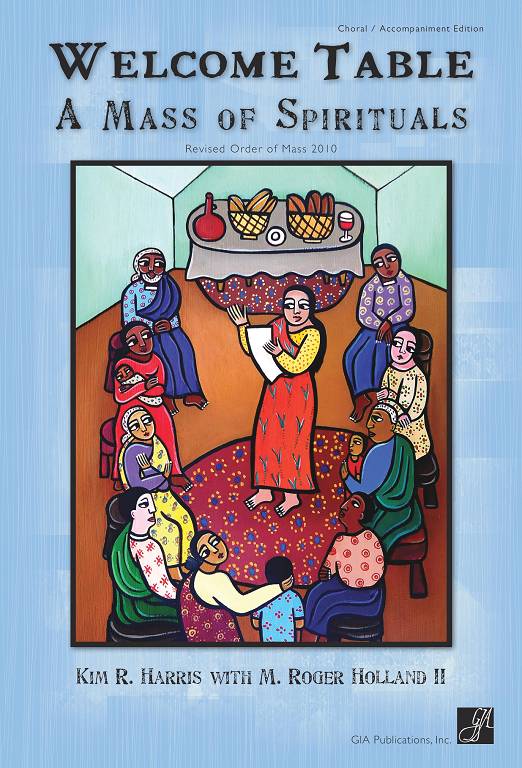Welcome Table: A Mass of Spirituals
Performance Notes by Kim R. Harris and M. Roger Holland II
For Black Catholics, remembering our past, honoring our present and imagining our future necessarily informs our cultural articulation in the celebration of the Eucharistic liturgy. Negro Spirituals, an early musical tradition of the African American experience, are a foundation part of African-American cultural, civic and theological history. Several composers created Mass settings based on the musical idioms of the spirituals and inspired by the liturgical changes proscribed in documents and practices since the Second Vatican Council. Thus, they brought together the African-American historical and liturgical heritage: “Authentically Black and truly Catholic.”
What makes Welcome Table: A Mass of Spirituals different from similar settings by other composers in the past is its literal treatment of the folk melodies. The text is taken from the newly revised Third Edition of the Roman Missal, the melodies are those of the Negro Spirituals.
This Mass uses recognizable tunes in totality, thus presenting a very authentic rendering of the spirituals in the context of the liturgy.
Welcome Table: A Mass of Spirituals was composed in partial fulfillment of Ph.D. comprehensive examinations, in Theology and the Arts, at Union Theological Seminary in the City of New York. It was first sung and prayed on March 10, 2010 in James Chapel at Union Seminary. Later that year, the celebration of Black Catholic History Month at St. Patrick’s Cathedral included Welcome Table as a part of the liturgical celebration.
This music is drawn from the depths of African-American experience in slavery and in freedom. The Negro Spirituals, however, are also a gift to the wider American and world family. The spirituals tradition was created for community singing and therefore, naturally encourages congregational participation.
Concerning an accompaniment:
It is our hope that Welcome Table be sung unaccompanied, thus privileging in a specific way the sound of the human voice in prayer and praise, as well as honoring the way in which the communities that created these melodies would have sung them, historically. At the same time, we realize there may be times or circumstances when an accompaniment is either desired or warranted. In this context, piano or organ accompaniment should be approached much in the same manner that one would accompany a hymn, taking into account the character of each individual movement. This may mean an accompaniment that resembles anything from art song to blues, jazz, or black gospel, and thus improvisatory. At no time, however, should the accompaniment be frivolous or whimsical, but always taking into account the source material and worship setting.
Cover concept developed by Martha Chlipala, Art Director, GIA Publications
Cover art by Laura James (used by permission)
